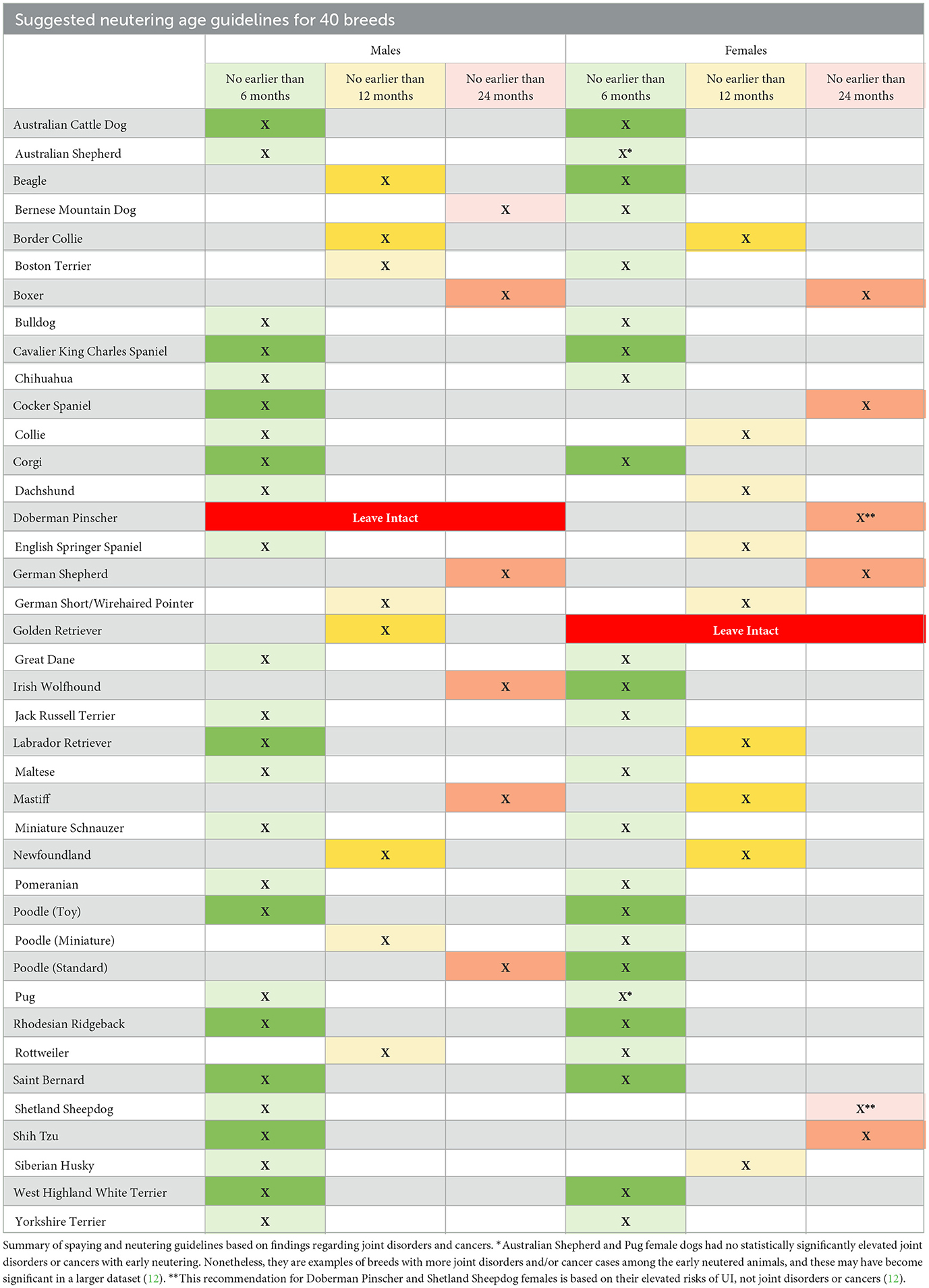
Researchers from the University of California, Davis, published the new guidance in the journal Frontiers in Veterinary Science. It adds to research started in 2013 that indicated neutering golden retrievers too early increases the risk of certain joint disorders and cancers. And now, more breeds have been added under this umbrella.
Neutering dogs (spaying female and castrating male dogs) has been a commonly recommended US convention for the first year in the dog’s life.
Research on 35 breeds of dogs revealed that early neutering increases risks of joint disorders, such as:
- Hip dysplasia (HD),
- Elbow dysplasia (ED),
- Cranial cruciate ligament (CCL) tear,
- Cancers, such as lymphosarcoma (LSA), mast cell tumor (MCT), hemangiosarcoma (has), or osteosarcoma (OSA), for some breeds.
- Joint disorder risks are heightened for some larger breeds and for mixed-breed dogs weighing more than 20 kg.
- Some breeds had elevated risks for cancers.
Several other research teams have reported health complications associated with neutering. The new study goal includes using the same methodology for data collection and analyses as in the study on 35 breeds for five additional dog breeds weighing at least 20 kg.
The recently studied breed data added to this list included: German Short/Wirehaired Pointer, Mastiff, Newfoundland, Rhodesian Ridgeback, and Siberian Husky.
Major differences among breeds appeared in vulnerability to joint disorders and cancers with early neutering:
- Male and female Pointer breeds had elevated joint disorders and increased cancers;
- Male Mastiff breeds had increased CCL and LSA and females had non-significant elevated CCL risks;
- Female Newfoundland breeds had heightened risks for joint disorders and males had non-significant elevated risks;
- Female Ridgeback breeds had heightened MCT with very early neutering; and
- Siberian Huskies showed no significant effects on joint disorders or cancers, but female breeds showed a non-significant but elevated CCL.
Updated guidelines cover 40 dog breeds. These results further emphasize the importance of personalized decisions regarding the neutering of dogs, considering the dog’s breed, sex, and context.

Source: Hart LA, et al. Frontiers in Veterinary Science 2024
